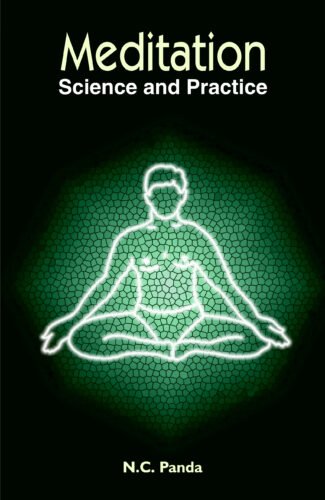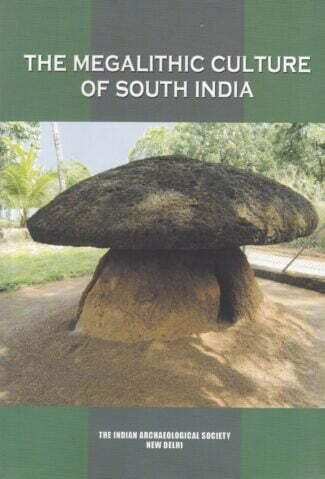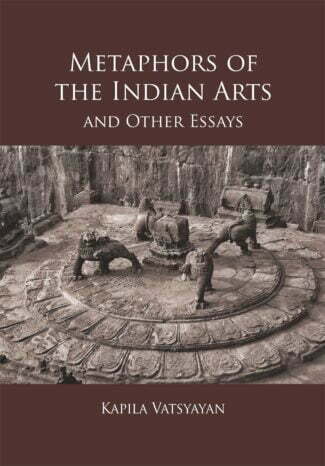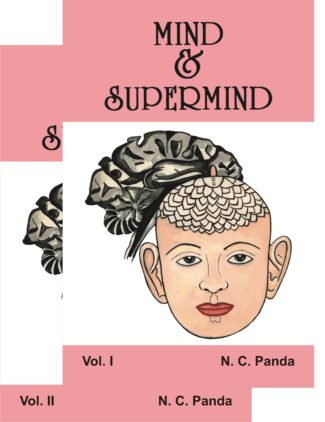Showing 591–600 of 1165 results

Prof. Panda discusses the eight limbs of Patanjala Yoga, emphasizing on meditation in its three stages of dharana, dhyana and samadhi. Delving into Patnnjalis classical yogic theories, he gives detailed guidelines on the practice of meditation and explains in scientific terms the benefits surfacing from the practice of meditation.
Yoga, contrary to the popular perception, is not merely a system of physical culture. It is, in fact, a uniquely Indian discipline aiming to bring about the union of an individual spirit with the Universal Spirit: the Cosmic Consciousness through what in Yoga is known as samadhi, a state of profound meditation. Patanjalis Yoga-sutram, written sometime around the second century bc, is the first, systematic, at once authoritative presentation of Yoga: in both its theoretical and practical aspects. Professor N. C. Panda, who has had a lifetime involvement with the science and practice of Yoga, here outlines the eight limbs of Patanjala Yoga, with added emphasis on meditation in all its three stages: dharana, dhyana, and samadhi; and how this ancient system of bodily and mental control is found to have a strong scientific basis. Offered in three parts, his book focuses, in Part 1, on the practice of meditation, with detailed guidelines concerning the relevant yogic postures, yogic breathing and breath-control. Part 2 presents Patanjalis classical yogic theories, showing how these are validated: both theoretically and experimentally, by modern science. In Part 3, the author explains, in pure scientific terms, the physical, psychic, therapeutic and spiritual benefits surfacing from the practice of meditation. Though based on the principles of classical yoga, Professor Pandas book is truly a brilliant effort to treat Yoga as an advanced science. Including a comprehensive glossary of Sanskrit technical terms and numerous illustrations, it is invaluable to medical scientists/researchers/anyone interested in Yogic Meditation and how it can give a holistic, healthy and creative life.

This volume focuses on the new studies, researches and revelations about the Megalithic culture. The old focus on structural forms has given way to the study of their alignment with solstice and constellation. The book also talks about the
ethno-archaeological approaches in understanding the socio-religious paradigm behind erecting such structural forms along with the study of megalithic art.
This volume focuses on the new studies, researches and revelations about the Megalithic culture. The old focus on structural forms has given way to the study of their alignment with solstice and constellation. The book also talks about the
ethno-archaeological approaches in understanding the socio-religious paradigm behind erecting such structural forms along with the study of megalithic art.

India’s association with the South-East Asian countries, especially those on either side of the Mekong River, is well known. It analyses India’s past and present relationship in the domains of architecture, religious engagements, interculturality, syncretism of cultures, interliterariness, composite literary cultures, religious arts, trade associations, among others.
India has a fascinating history of cultural relationship with South-East Asia, spanning across more than the last two millennia, mainly with the spread of Buddhism and Hinduism, deeply impacting the cultural, religious and social lives of people in countries such as Cambodia, Indonesia, Laos, South Korea, Sri Lanka, Thailand and Vietnam. The Hindu-Buddhist monuments in South-East Asia stand testimony of this peaceful and mutually beneficial interaction. The contents of this book Mekong-Ganga Axis centre around India’s association with most of the countries of the region, especially those on either side of the Mekong River.
Most of the South-East Asian countries were influenced by more than two foreign cultures, though they have an indigenous culture. The Chinese and Indian cultures had impacted them the most, in addition to the European influence. However, only Indias impact was peaceful and, to a great extent, non-political. This paved the way for many developments in architecture, religious engagements, interculturality, syncretism of cultures, inter-literariness, composite literary cultures, religious arts, trade relations and so on.
This book thus critically engages one to all these topics and more, and recalls India’s glorious relationship of the forgone era with these countries, showcasing somewhat a similar kind of cultural/religious affinity from South China to India. And two great rivers, Mekong and Ganga, are witness to it. It also reinstates the criticality of India to be engaged with these countries at present because of the compulsions of a globalized world.

This anthology is a selection of writings of Dr Kapila Vatsyayans nearly four-decade long journey as an art critic and art historian. It reveals the distinct nature of Indian arts from the angle of the world-view in which they emerge. At the same time, it amply shows the theory of art and aesthetics which may enable us to to see the other traditions of art from our own window.
This anthology Metaphors of the Indian Arts and Other Essays is a selection of writings of Dr Kapila Vatsyayans nearly four-decade long journey as an art critic and art historian. It reveals the distinct nature of Indian arts from the angle of the world-view in which they emerge. At the same time, it amply shows the theory of art and aesthetics which may enable us to to see the other traditions of art from our own window. In a seminal article entitled Metaphors of the Indian Arts, the author identifies some fundamentals which permeate the Indian artistic traditions.
In the article entitled Mountain, Myth, Monuments Dr Vatsyayan discusses the significance of mountains and the sanctuaries, diversity of attitude and approaches to them in Indian context. She focuses on sacred mountains, especially Kailasa, which have dominated the Indian imagination for many millennia in the world of literature, architecture, sculpture, music and dance.
The attitude to the human body as also the self-consciousness of the relationship of the senses and the mind in diverse civilizations has been of special interest to the author for decades. In the article Early Evidence of Female Figures, Music and Dance, she points at essentials of treating the human body in Indian art, specially the female body, over a long span of history. She draws attention to the large measure of consensus on the identification of meaning of the particular or single image or relief, ranging from the examples from Mesopotamia to Assyria to Egypt and the figurines and statues of the Indus Valley, Mohenjo-Daro, Harappa and Mehergarh.
Further she returns to explicitly stating the ideational background of Indian aesthetics. Finally, she identifies certain motifs which have travelled across a vast geographical area, specially in South-East Asia.
Altogether, these essays will enable the reader to trace not only her journey but also her place in Indian art history as a carrier of a tradition of A.K. Coomaraswamy and Stella Kramrisch.

This volume, a tribute to Prof. Amita Chatterjee, features the views of forty scholars across the globe on major philosophical areas like Fusion Philosophy, Mind and Cognition, Mind and Perception, Mind and Language, Logic, and Indian Philosophy along with the autobiography of Chatterjee and her response to the contributions of those scholars.
“Knowing one’s tradition is important; but only when tradition is not presented as fossilised but as continuous with our present-day living. In most places we do not make enough effort to show the link between the classical philosophical thoughts and the contemporary world view. We need to show that we can still meaningfully interact with the classical philosophical systems”, writes Amita Chatterjee in her seminal essay “In Search of Counterpoints”. This volume is dedicated in her honour. “Knowing one’s tradition is important; but only when tradition is not presented as fossilised but as continuous with our present-day living. In most places we do not make enough effort to show the link between the classical philosophical thoughts and the contemporary world view. We need to show that we can still meaningfully interact with the classical philosophical systems”, writes Amita Chatterjee in her seminal essay “In Search of Counterpoints”. This volume is dedicated in her honour. Chatterjee belongs to a genre of philosophers, who have as part of their cultural heritage, like Raghunath Siromani and Immanuel Kant. Chatterjee, in addition to breaking cultural boundaries, desired to break boundaries that have kept professional disciplines apart. She deeply believes that there are certain basic questions that are questions not for any specific discipline. These questions, she thinks, could not be answered by remaining within one single discipline. It is no surprise that she was the founder of the first Cognitive Science Centre in India. Responding to her multifaceted academic talent, forty academics from diverse disciplines and from all over the world have contributed papers to this volume. The major areas of Chatterjee’s interest that feature in this volume are: (i) Fusion Philosophy, (ii) Mind and Cognition, (iii) Mind and Perception, (iv) Mind and Language, (v) Logic and Vagueness, (vi) Logic, (vii) Indian Philosophy, and (viii) Philosophy, Society and Popular Culture. Chatterjee’s intellectual autobiography and her responses to each of the papers are parts of this volume.
ISBN 9788124609514 (vol. 1)
ISBN 9788124609521 (vol. 2)

This uncovers the secrets of mind so that one can awaken, and prepares one for meditation. It breaks a lot of myths about meditation. Human machine has three brains and the book elaborates that using these minds, one can keep away from diseases, stress, ageing, etc. It also teaches one how to transform negative thoughts to creative ones, and how to use the calm mind and intuition to solve our problems that circumvent us in our day-to-day life.
Mind and Meditation opens the doors of wisdom for people interested in knowing what meditation is and how to meditate.
In this book, Dr Amit Jain uncovers the secrets of our mind, so that we can awaken. In simple words, this book prepares us for meditation. It breaks lots of myths related to meditation. The book reveals that the human machine has not one but three brains and how by using the three brains in a balanced way one can keep oneself away from diseases, stress, aging, etc. The book also throws light on different types of minds and how they trap us and destroy our intuition.
Overall the book calls the reader to learn how to transform negative thoughts. For those wanting to achieve a calm mind, it’s a blessing. It also teaches how to use this calm mind and intuition to solve our problems creatively. Insightful and life changing!

The book systematically unfolds Vedantic psychology to evolve an integrated perspective on mind and to synthesize ancient wisdom with contemporary sciences. The author also speculates on linking mind to the supermind the Brahman.
Astonishingly rich is the heritage of Indian psychology. Embodied in some of the better-known, traditional philosophical systems, it convincingly spells out the rationale behind memory, recognition, emotions, instincts, reasoning, creativity, and myriad other mind-related phenomena, which sofar remain baffling, unanswered questions in modern cognitive sciences, mechanistic psychology and their kindred disciplines. Mind and Supermind, for the first time, systematically unfolds Vedantic psychology in its larger effort not only to evolve an integrated perspective on mind, but also to synthesize ancient wisdom with contemporary sciences. A distinguished scholar of Sanskrit, philosophy and science, Professor Panda here re-explores the nature of mind, its Indian concept and how it compares with its Western world-view: religious, philosophical, psychological, and scientific. Thus elaborating the concepts of mind as set out in the Sankhya, Yoga, Tantra, Vedanta and other orthodox systems vis-a-vis (a) philosophical perspectives: from Plato and Aristotle to Wittgenstein and Strawson, (b) psychological viewpoints of William James, Freud, Jung, Watson and others, (c) theories of modern physiologists/physicists governing brain, mind, and artificial intelligence; the author builds a solid foundation for the superstructure of parapsychological phenomena. And also speculates about the possibilities for (individual) mind to link up with the Supermind, which, in Vedantic concept, is Brahman: fundamental Consciousness that illumines everything living and non-living. Growing from years of Dr. Pandas indepth, analytical studies, the book is offered to dis-cerning audiences in two parts: Indian Perspective (Volume 1) and Western Perspective (Volume 2), with relevant illustrative material.

The study reviews the philosophical thinking that has, since Descartes time, been invested in the shaping of this dualistic tradition. It compares the Cartesian view of mind-body dualism with the dualism of traditional Samkhya philosophy.
How do we (basically) conceptualize a human being or, say, any person? Is he just his body? Or a mind too besides his body? What, then, is mind, or how is it related to body? And since body is destructible, does man have disembodied existence as well? Addressing these age-old questions of fundamental importance, the book focusses on mind-body dualism. Which, despite its exposure to scathing criticisms, and even outright repudiations, has survived as a powerful dualistic tradition. Alpana Chakrabortys study is not a critique of mind-body dualism; but a coherent, quintessential review of the philosophical thinking that has, since Descartes time, been invested in the shaping of this dualistic tradition, its theoretical parameters and its key issues. Also setting out Western concepts of person, disembodied existence/survival, and bodily resurrection, the author considers the Cartesian view of mind-body dualism, and how it compares with the dualism of traditional Indian Samkhya philosophy. In her effort to spell out issues central to mind-body interaction, Dr. Chakraborty develops a vast historical framework from the acknowledged treatises/theories of Cottinghum, Don Locke, Gilbert Ryle, C.D. Broad, C.J. Ducasse, Nichlos Bohr, P.F. Srawson, and other Western philosophers including the very recent theories of Complementarity and Meta-Linguistic Dualism. Invaluable to the scholars of philosophy, metaphysics and psychology.

This book tells the story of minerals and metals in ancient India by unravelling the mysteries of archaeomaterials with scientific inquiry into production modes and use of minerals. It also studies the indigenous literary sources for the purpose.
In two volumes, the book tells the fascinating, coherentlywoven story of the Minerals and Metals from across the entire sub-continental sprawl of the old-world India (including Pakistan and Bangladesh). Covering a vast span of over five millennia: from the Pre-Harappan Chalcolithic sites, like Mehargarh, Mundigak and Ganeshwar to about ad 1200, Volume 1 is a brilliant effort to unravel the mysteries of archaeo-materials with scientific inquiry into both the modes of production and use of minerals, gems, metals, alloys and other kindred artefacts. Including, as he does, a chronological discussion of the specifically excavated sites, from Mehargarh to Taxila, Professor Arun Biswas captures a panoramic view of the hoary, richly variegated cultures which, in their final analysis, lead him not only to question the diffusionist theory concerning the Aryan intrusion, but also to highlight, among a range of his first-time-arrived conclusions, the primacy of India in the areas of non-ferrous ore mining, production of carburised iron, wootz, steel, forge-welding of wrought iron, distilled zinc and high-zinc brass. Barring the foreign travellers accounts, the volume draws exclusively on archaeological evidence. Volume 2 approaches the theme from the viewpoint of indigenous literary sources chronologically marshalling over three thousand years of Sanskrit writings: ranging from Rigveda to Rasaratnasamuccaya. Reviewing, among other things, the entire gamut of studies in gemmology (ratnashastra) and alchemy (rasashastra), the authors here set out a meticulous analysis of Rasaratnasamuccaya: a fourteenth century text, high-lighting the climactic heights of iatrochemistry in ancient India. With detailed explanations of Sanskrit technical expressions, the volume also tries to correlate, wherever possible, literary evidence with archaeological data. Sponsored by the Indian National Science Academy (INSA), New Delhi, Minerals and Metals in Ancient India has involved years of the authors painstaking research. Together with maps, figures, tables, appendices and illustrative photographs, it will evoke enormous interest in geologists, metallurgists,archaeo-metallurgists, mineralogists, gemmologists, historians of science, archaeologists, Indologists, and the scholars of Indian pre- and ancient history.

Professor Biswas examines the fascinating indigenous gems, non-gem minerals, metals and metallic art of India from ad 1200 onwards to almost the threshold of modern times, focusing on iron and steel, brass and zinc in pre-modern India and the superb vitality of its artisans tradition.
A Sequel to his widely acclaimed Minerals and Metals in Ancient India, in two volumes, (1996), Professor Biswas here continues with the fascinating story of indigenous gems, non-gem minerals, metals and metallic art : from 1200 ad onwards to almost the threshold of modern times. Like its predecessor, this volume too is sponsored by the Indian National Science Academy (INSA), New Delhi. Beginning with a view of medieval India’s enchanting gems, its highly dexterous diamond mining, and an array of non-gem minerals including, among others, metallic ores of copper, lead, zinc, ferrocobaltite, aluminium, and even building stones, the book offers a focussed study of iron and steel, brass and zinc in pre-modern India with coherent descriptions of the diversities of ores processed, smelting techniques, wootz-making and other products in different parts of the subcontinent. A painstakingly researched work based on foreigners travelouges and many other sources, the book re-explores the achievements of indigenous industries of the day, highlighting how, for about two millennia since the Lothal and Atranjikhera eras, India commanded primacy in zinc and brass; how its zinc smelting and distillation technology were transferred to the West, like the Chinese technologies of paper and gunpowder; and how its artisans could work marvels in metal. The author examines, in retrospect, Indian traditions of metallic works, which are vividly exemplified in its arts of enamelling, encrustation, jewel-setting, brass and high zinc Bidriware, and much else. Concludingly, Professor Biswas also goes into the causes that spelt decline of the Indian industries and the superb vitality of its artisans tradition.
| There are no products |